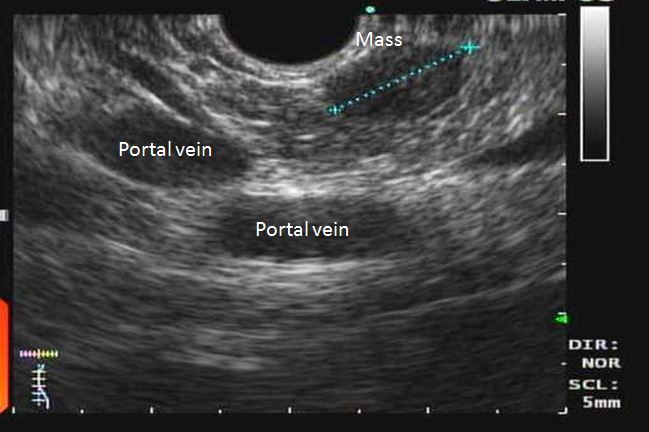- Clinical Technology
- Adult Immunization
- Hepatology
- Pediatric Immunization
- Screening
- Psychiatry
- Allergy
- Women's Health
- Cardiology
- Pediatrics
- Dermatology
- Endocrinology
- Pain Management
- Gastroenterology
- Infectious Disease
- Obesity Medicine
- Rheumatology
- Nephrology
- Neurology
- Pulmonology
Whipple Triad Classically Suggests Insulinoma
Diet and medication can be used to manage symptoms of insulinoma. Once the lesion is well localized, resection is curative.
Figure. Click to Enlarge.

A 26-year-old woman experiences occasional blurring of her vision and palpitations. Her symptoms often improve after drinking juice. She does not have a history of diabetes mellitus. One day, she presents to the ER after experiencing a seizure. A head CT performed in the ER is negative. Her blood glucose level is 30 mg/dL, and she is given intravenous dextrose solution. During her workup, abdominal CT is performed and is notable for a mass in the head of the pancreas (Figure, broken blue line).
1. What is the most likely cause of this patient’s clinical presentation?
2. What is the name of the triad described?
3. What is the next step in management?
Answers and discussion
The most likely cause of this patient’s clinical presentation is an insulinoma, a rare islet tumor of the pancreas that is characterized by symptomatic hypoglycemia and inappropriately increased plasma insulin during an episode of spontaneous hypoglycemia. Insulinomas are evenly distributed in the pancreas; that is one-third are found in the head, one-third in the body, and one-third in the tail. On imaging, characteristic features of islet cell tumors, which include insulinomas, have a well-circumscribed and encapsulated appearance.
The triad described in this patient is known as Whipple triad, which consists of (1) symptoms of hypoglycemia, (2) hypoglycemia (blood glucose level <50 mg/dL), and (3) relief of symptoms following ingestion of glucose. When Whipple triad is mentioned, one classically thinks of insulinomas, but these features are not specific for insulinoma.
Management of insulinomas includes controlling symptoms of hypoglycemia and surgical resection. Hypoglycemia can be controlled through a combination of diet and medication. Timed snacks with avoidance of rapidly absorbable carbohydrates (except during hypoglycemic episodes) are preferable. Medical therapy includes the use of diazoxide, an alpha-adregenic receptor that inhibits insulin release, and octreotide, a somatostatin analogue that inhibits the secretion of insulin in large doses. Accurate tumor localization is essential before surgical resection. For smaller tumors (<1 cm), CT and MRI have a low detection rate. The preferred methods for tumor localization include either endoscopic ultrasonography or scintigraphy studies. Once insulinomas are localized, surgical resection is curative.
